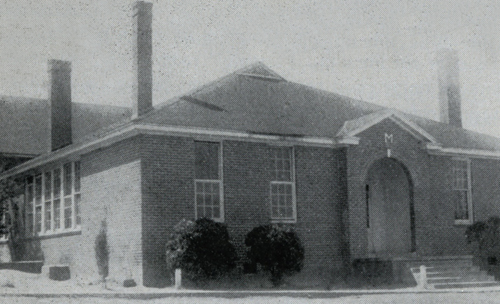

Moultrie High School for Negro Youth |
||||||
“We were a unified group of students. |
||||||
During the 1940s, Moultrie, located in Southwest Georgia, was primarily an agricultural community of approximately 16,000 people with a black population of approximately 4,000. Tobacco, cotton, and peanuts were the primary crops and generated work for the African Americans; however, some industry in the area also offered limited opportunities as well. from W. H. Brown & W. A. Robinson, Serving Negro Schools: A Report on the Secondary School Study (1946) The Moultrie school was a combination elementary and secondary school with grades 1–11 and, during the Secondary School Study, maintained an enrollment of 800 students with most of the 20 faculty engaged in some form of program development. The secondary school faculty consisted of eight full-time teachers for a high school enrollment of 165 students. One possible reason for the selection of this school was that Moultrie High School (for white youth) was participating in the GEB-funded cooperative research project, the Southern Study. Moultrie High School for Negro Youth received accreditation in 1942 while becoming an institutional member of the Association of Colleges and Secondary Schools for Negroes. The Moultrie High School building is thought to have been completed in 1938. Moultrie High School for Negro Youth received Southern Association accreditation in 1942 while becoming an institutional member of the ACSSN. “Students came from far away because there was a school bus. We had little tension among city and rural students. We did not know how to ostracize students. We were all poor—we didn’t know it, but we were. And we knew that education was important. There was strong fellowship among us.” While the setting represented a rural-town school, the teachers were closely aligned with Albany State College, although Moultrie did not serve as an off-campus laboratory school student-teaching site and Albany State maintained an official laboratory school (the Hazard Laboratory School).
In the 1950s, the school’s name was changed to William Bryant High School and, with the desegregation of schools in 1965, the structure served as a middle school. The building no longer stands, and the site serves as the home for the Frank Ryce Community Center. |
||||||

an institutional member of the International Coalition of Sites of Conscience
Museumofed@gmail.com



